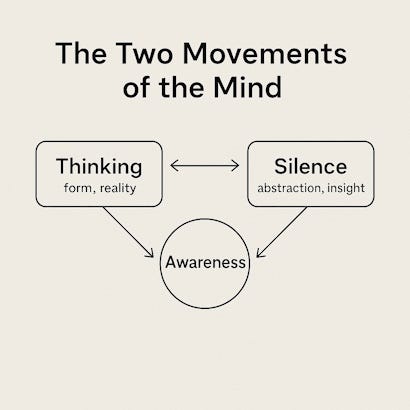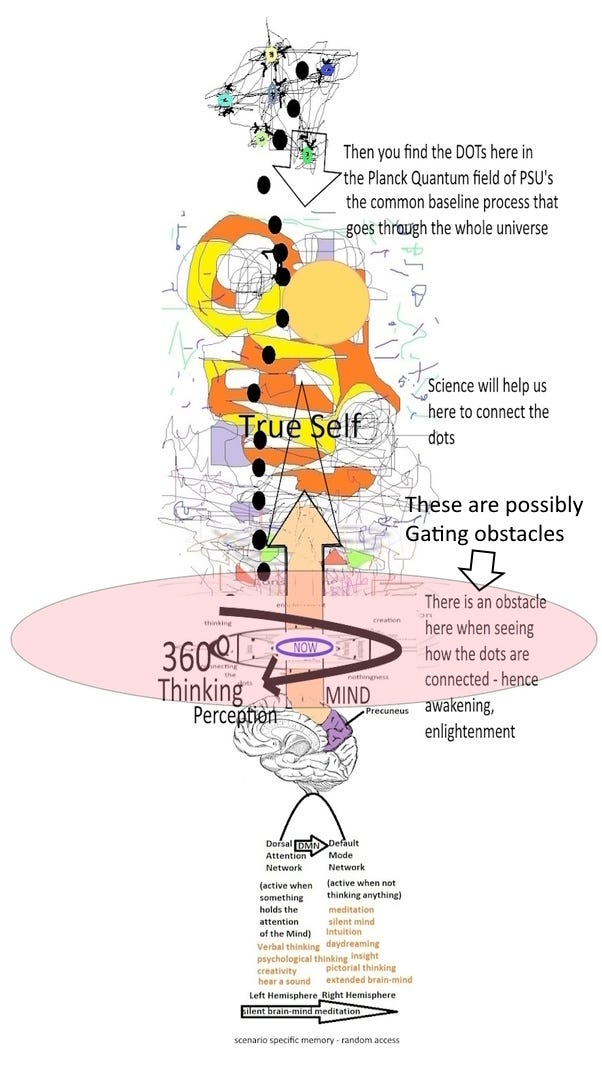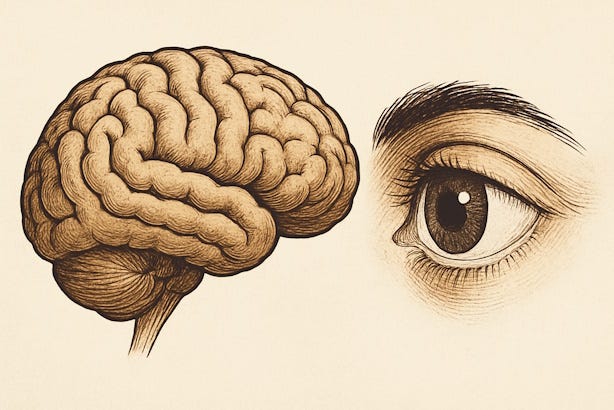The mind saw its own movement

What if the whole spiritual search was never about God, enlightenment or the universe — but about understanding the structure of your own brain and mind? I did not reach the end of the search through faith or surrender. I reached it because I finally saw something concrete — that every spiritual experience, every moment of insight, every silence, every conflict — all of it begins and ends inside the architecture of the brain-mind. Once I saw the mechanism clearly, the search simply ended. Not because I discovered God, but because I understood the instrument that was searching.
For years, I thought spirituality was about belief, transcendence or mystical experience. But then I saw that what the masters were really pointing towards was not a doctrine but a process — the movement of thought, the restlessness of the mind, the noise that covers silence. Krishnamurti was not talking about religion. He was talking about the brain and mind. When I understood this, I knew I was in the right direction, not through faith, but through seeing.
But there was still one more step. If I am created by the universe, then I must be connected to it in structure, not just in imagination. So I asked: how is the brain and mind organised? What is its underlying pattern? The answer came when I realised that everything in existence — from galaxies to neurons, from language to intuition — moves between two poles: reality and abstraction.
Reality is the tangible: thought, language, perception, memory, logic. Abstraction is the invisible: silence, insight, intuition, direct knowing — what I call the sense of knowing. When thought comes to its limit and becomes quiet, abstraction begins. Silence is not empty. It is full of potential. It is the natural, untouched state of the brain-mind when thought is no longer interfering.

In that silence, insight appears, not as a thought but as a direct perception. It is a natural function of the brain. This is the moment when the mind sees itself. The search, which depended on thought, can no longer continue in the same way. Curiosity remains, but it is no longer driven by an obstacle. The cycle Krishnamurti called “the ending is the beginning” loses its energy. It doesn’t collapse — it simply comes to rest.
From here, I no longer use thought to chase truth. I use it only where it belongs — to study, to learn, to solve. And when thought reaches its boundary, I return to silence. Insight then meets the problem from a different dimension. This movement — thought into silence, silence into insight — becomes natural, like breathing. This is not a practice. It is how the brain is made.

And then I saw something even deeper: this movement is not personal. It is the same pattern that exists everywhere. Galaxies expand and dissolve. Waves rise and fall. Hearts contract and release. Thought appears and disappears into silence. The brain and the universe are not separate — they share the same architecture. This is the holographic principle as a living experience, not a scientific theory: the part reflects the whole.
But when I first saw this clearly, another question quietly surfaced: if this is the mechanism — thought, silence, insight — what am I supposed to do with it? The mind, which was used to effort, to methods, to achieving, wanted to apply it, to turn it into a practice or a path. But the answer never came as instruction. It came the same way insight always comes — without thought. You do not use this process. You live with it. Thought does what it can. Silence does what thought cannot. Insight arrives on its own, from that quiet intelligence that holds both the mind and the universe together. To see this, is already to be aligned with it. Nothing more is required.
So the search did not end because I reached a spiritual destination. It ended because the mechanism of searching became visible. After that, life became simpler. Curiosity stayed, but it was no longer restless. There was no psychological distance between where I am and where I should be. There was only this — the movement of thought when needed, the return to silence when it is not.
Spirituality was never elsewhere. It was the brain seeing itself.

There is nothing more to seek because the mechanism of seeking has been seen. What remains is to live with it — not to abandon thought or worship silence, but to move naturally between the two. To think when thinking is needed. To be still when it is not. To let insight arrive when it must, not as a reward, but as part of the intelligence that holds both the brain and the universe in the same quiet order. To live without conflict in the brain-mind. Thinking generates doubt in oneself, but silence in brain-mind removes doubt in you because it adds the missing pieces to your enquiry to create the solution.
This is not an ending. It is the place where ending no longer needs to become another beginning.
